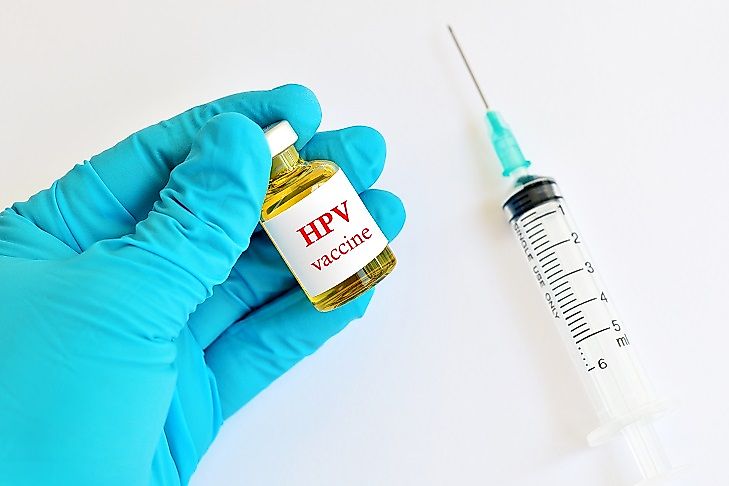Countries With The Highest Incidence Of Cervical Cancer In The World

Cervical cancer begins in the cells that line a woman’s cervix. Two types of cells can be found here, the squamous and the glandular. Where they meet, the transformation zone, is where cervical cancer generally begins. Pre-cancerous changes include neoplasia, lesions, and dysplasia. Several factors are thought to contribute to the formation of cervical cancer including multiple sexual partners, sexually transmitted infections, smoking, and the human papillomavirus (HPV). Two types of HPV are responsible for 70% of cervical cancer and precancerous lesions. In some countries, this cancer is more prominent than in others.
Prevalence of Cervical Cancer Around the World
Cervical cancer is the fourth most common cancer in women around the world. Annually, it causes over 270,000 deaths, 85% of these are in developing countries where cervical cancer is actually the second most common cancer in women. Estimates suggest that over 1 million women are currently living with cervical cancer. Many of them have no access to healthcare. This explains why every country with high incidence are located in the developing world, particularly in Africa and Latin America.
Countries With The Highest Rates Are In Africa
In Malawi, 79.5 women out of 100,000 develop cervical cancer. In Mozambique it is 65 and in Comoros, 61.3. This pattern continue with Zambia (58), Zimbabwe (56.4), Tanzania (54), Swaziland (53.1), and Burundi (49.3). In the majority of sub-Saharan Africa, 40 out of 48 countries, cervical cancer is the number 1 cause of cancer-related deaths in women. This was once the leading cause of cancer-related deaths in women all over the world until developed countries began PAP screening as a public health outreach. This has not been feasible in African nations where clinics are located sometimes more than a day’s journey from the most rural villages. Even if a woman makes it to the clinic for a PAP exam, the follow-up treatment requires repeat visits that often prohibit them from receiving treatment.
Cervical Cancer Rates in Developing South American Countries
Latin America makes its way on the list as well in the 9th and 10th positions. Bolivia has a cervical cancer rate of 47.7 out of every 100,000 women and Guyana has 46.9. The reasons for high rates here are similar to that of the previously mentioned African nations. These are poor countries with little to no access to healthcare and lacking in public educational campaigns. Women living in rural areas are at increased risk specifically for these reasons.
Prevention and Treatment of Cervical Cancer
Cervical cancer can be treated by early detection. If precancerous lesions are detected during a routine PAP smear exam, they can be treated before the cells become malignant. In these cases, treatment has a high success rate. For women between the ages of 21 and 65 are recommended to receive a PAP smear every 3 years.
While PAP exams have been one of the most successful public health prevention programs in history, other screening techniques have also been useful. Visual inspection with acetic acid can be performed by health professionals or trained community health workers. If precancerous lesions are detected by visual exam, acetic acid can be applied in the same moment to prevent cancer from forming.
Vaccines against HPV are also available. These should be administered prior to sexual activity in girls as the vaccine is most effective before the virus is contracted. The recommended age for girls is between 9 and 13 years old. Some countries have even begun to vaccinate boys to prevent genital cancer and warts.
If cancer is diagnosed, treatment options vary depending on the stage. When cervical cancer is detected in its earliest stages, surgery and radiation therapy are the most common treatment methods. Chemotherapy is utilized for more advanced stages.
Cervical cancer is a preventable disease. Hundreds of thousands of women are dying every year from something that is preventable and treatable. Healthcare systems in these countries, and many others, need to be restored in order to stop these deaths from occurring.
Countries With The Highest Incidence Of Cervical Cancer In The World
| Rank | Country | Age-Standardised Rate per 100,000 (World) |
|---|---|---|
| 1 | Malawi | 75.9 |
| 2 | Mozambique | 65.0 |
| 3 | Comoros | 61.3 |
| 4 | Zambia | 58.0 |
| 5 | Zimbabwe | 56.4 |
| 6 | Tanzania | 54.0 |
| 7 | Swaziland | 53.1 |
| 8 | Burundi | 49.3 |
| 9 | Bolivia | 47.7 |
| 10 | Guyana | 46.9 |











